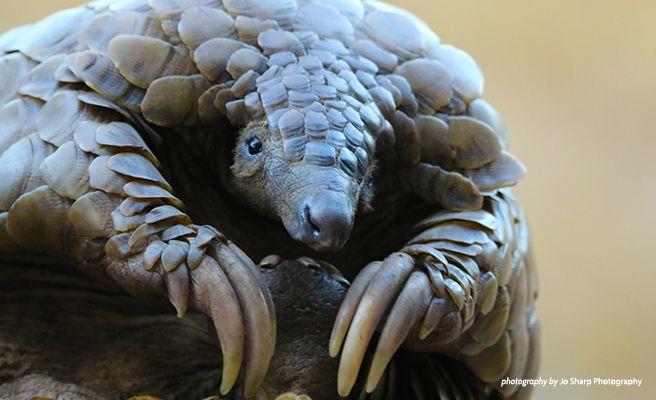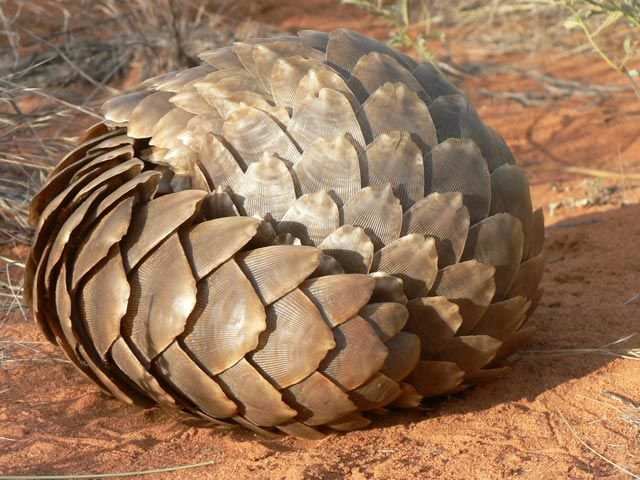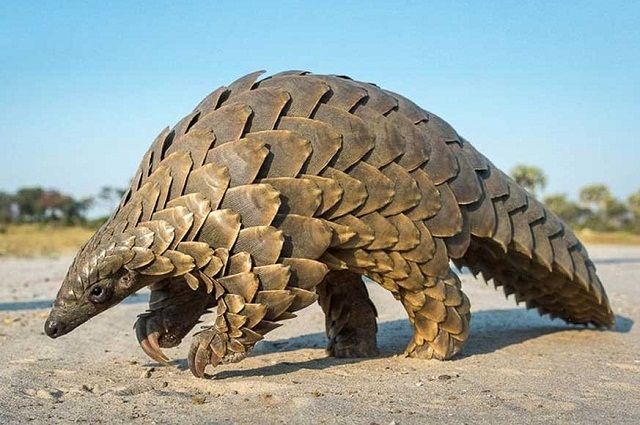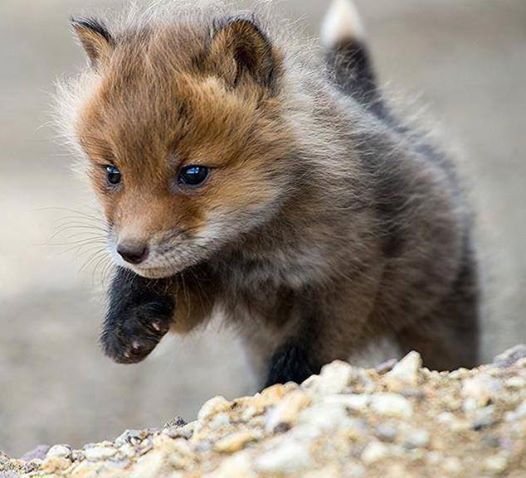AARP Hearing Center
- AARP Online Community
- Games
- Games Talk
- Games Tips
- Leave a Game Tip
- Ask for a Game Tip
- AARP Rewards
- AARP Rewards Connect
- Earn Activities
- Redemption
- AARP Rewards Tips
- Ask for a Rewards Tip
- Leave a Rewards Tip
- Help
- Membership
- Benefits & Discounts
- General Help
- Caregiving
- Caregiving
- Grief & Loss
- Caregiving Tips
- Ask for a Caregiving Tip
- Leave a Caregiving Tip
- Entertainment Forums
- Rock N' Roll
- Leisure & Lifestyle
- Health Forums
- Brain Health
- Healthy Living
- Medicare & Insurance
- Health Tips
- Ask for a Health Tip
- Leave a Health Tip
- Home & Family Forums
- Friends & Family
- Introduce Yourself
- Our Front Porch
- Money Forums
- Budget & Savings
- Scams & Fraud
- Retirement Forum
- Retirement
- Social Security
- Technology Forums
- Computer Questions & Tips
- Travel Forums
- Destinations
- Work & Jobs
- Work & Jobs
- AARP Online Community
- Home & Family Forums
- Our Front Porch
- Re: NEW TOPIC: ANIMALS OF THE WORLD
NEW TOPIC: ANIMALS OF THE WORLD
- Subscribe to RSS Feed
- Mark Topic as New
- Mark Topic as Read
- Float this Topic for Current User
- Bookmark
- Subscribe
- Printer Friendly Page
- Mark as New
- Bookmark
- Subscribe
- Mute
- Subscribe to RSS Feed
- Permalink
- Report
NEW TOPIC: ANIMALS OF THE WORLD
As animals are heterotrophs, it means they feed on living organism directly or indirectly. Again these are sub divided into herbivores, carnivores, omnivores and parasites. Generally all animals are predators. It means they hunt for food on other living organisms. In general extinction of some animals had taken place since some year due to variations in the earth.
Animals are generally considered to have evolved from a flagellated eukaryote. Animals which are living close to hydrothermal vents and cold seeps on ocean floor will not depend on energy of sunlight. Animals are divided into two broad groups: vertebrates and invertebrates. Vertebrates are animals which have back bone. Invertebrates are animals which do not have backbone. There are different types of animals in the world. Let's see how many we can post with a short description of different types of animals in the world with their photos.
I will start with Squirrels "the cute little highly unstable creatures". The most surprising thing about them was the photograph was allowed to come very close to them. I think we all "Love Watching Them!!!
This is intended to be an ongoing topic so feel free to add as many animals as you would like! Like the squirrels most animals have several different members in the group. Some will surprise us all!
- Tags:
- ANIMALS OF THE WORLD
- Mark as New
- Bookmark
- Subscribe
- Mute
- Subscribe to RSS Feed
- Permalink
- Report
Oribi Long Necked Small Antelope
Oribi is a graceful slender tagged, long necked small antelope found in grassland almost throughout the sub Saharan Africa. Oribi falls, prey to numerous animals like hyenas, python, crocodiles, carcicats, leopards, hunting dogs and jackals. Their populations are threatened by human activities like habitat destruction, illegal hunting.
Where to find the OribiThey are found in most countries throughout the sub Saharan Africa ranging from Senegal to west and central Ethiopia, southern Somalia, eastern Kenya across into Mozambique, Zimbabwe and in central and eastern South Africa. They inhabit open grasslands or thinly bushed country.
In Uganda you will easily this antelope in Bugungu Wildlife Reserve.
What the Oribi Eats
Oribi prefer to east short grasses but will browse on leaves, foliage and young shoots during the dry season. Life span up to 14 years.
How to identify the OribiOribi weigh an average of 12-22kg. The back and upper chest in yellow to orange brown. The chin, throat, chest, belly and sump are white. The tail is short and bushy. Has a white crescent shaped band of fur above the eye. Below each ear is a large sound black glandular patch the nostrils are prominently red. Only males grow horns which are slender and upright, ridged to about halfway up the ends being smooth and pointed.
Behavior
Oribi are found on their own in parts or in small groups of one male with two or more females. Oribis are most active in the morning, late afternoon and evening. When alarmed, they produce a shrill whistle. It threatened they gallop array, bounding shift legged in to air every few strides, a behavior known as stetting. They breed from august to December and a single offspring is born.
- Mark as New
- Bookmark
- Subscribe
- Mute
- Subscribe to RSS Feed
- Permalink
- Report
Don't try this at home kids! I'm a silly American tourist!
From Wikipedia:
Heterometrus, whose members are also known by the collective vernacular name giant forest scorpions, is a genus of scorpions belonging to the family Scorpionidae. It is distributed widely across tropical and subtropical southeastern Asia, including Cambodia, Laos, Thailand, Vietnam, India, Sri Lanka, Nepal, and China (Tibet).[ It is notable for containing some of the largest living species of scorpions.
It's nice to be important but it's more important to be nice.
- Mark as New
- Bookmark
- Subscribe
- Mute
- Subscribe to RSS Feed
- Permalink
- Report
- Mark as New
- Bookmark
- Subscribe
- Mute
- Subscribe to RSS Feed
- Permalink
- Report
Often used as a catchall to cover everything from wildlife photos to macro images of flowers, nature photography spans a wide variety of styles and approaches that, while inherently different, share many similarities.

Nature photography is a versatile medium with a unique set of challenges and the potential to tell compelling stories. Whether you’re experimenting with shutter speed to catch an animal in motion, or you’re trying out different depths of field in your close-up flower photograph, it takes patience and creativity to successfully capture the great outdoors.
When shooting outdoors, there are several things to keep in mind. Thanks to inclement weather, constantly changing light, and uncooperative wildlife, nature photography shoots are different every time. As renowned animal and wildlife photographer Carli Davidson says, “Studio photographers have waking nightmares about having to shoot in nature because it’s such an uncontrolled environment.” If you’re used to working in a studio, shooting outdoors pushes you outside your comfort zone — physically and creatively.
The art of planning ahead.
Before pulling on your hiking boots and hitting the trails, be sure to research and plan your outdoor shoot. This includes strategically choosing your time of day and lighting. Morning and evening light is often the best for capturing photos of the natural world, since the light is softer without the harsh shadows of midday — be prepared to set your alarm to 5 a.m. instead of 8 a.m.
Planning also ensures you have the right gear. You’re at the mercy of the elements outdoors and you don’t want to be unprepared. As Davidson says, “Whether it’s 10 degrees or 150 degrees outside, I’m going to have to be out there all day.” Getting the appropriate clothing, gear, and equipment is vital. Always bring something waterproof to protect your gear. And bring a hat to shade your camera if it’s sunny, so you can see the camera display to check your exposures.
“You don't need a lot of specific gear. The most important thing with nature photography is getting yourself out into nature,” experienced photographer Jeff Carlson says. Pack light, but always bring extra batteries, storage cards, and a lens with a broad focal length range. Carlson recommends starting with a DSLR camera with an 18–55 mm lens. This gives you enough range to capture some details in the distance, while also capturing the details in your immediate surrounding.
- Tags:
- Capturing wildlife
- Mark as New
- Bookmark
- Subscribe
- Mute
- Subscribe to RSS Feed
- Permalink
- Report
Studying the creativity and intelligence of the octopus!
This story was originally broadcast January 12, 2020.
It's one of the most bizarre creatures on Earth, and not just because it looks so different. The octopus can camouflage itself in a flash; squeeze its entire body through a one-inch hole; and their brains? That's right, an octopus has one large central brain, and eight mini-brains, one in each arm.
"Octopuses are so brilliant," said author and naturalist Sy Montgomery, who believes their intelligence is almost off the charts.
"We give 'em the same toys to play with that we give our children," Montgomery said. "They love to play. Play is one of those characteristics of higher minds."
Rudy, a giant Pacific octopus, was one of the stars of the New England Aquarium in Boston, before she passed away recently from old age. When correspondent Chip Reid visited last year, Rudy seemed to want to play with us.
Reid said, "Some people go, 'Eeeww, that's creepy.' You go …?"
"I say, this is one of the most beautiful creatures on this planet, one of the smartest, one of the most interesting, and one of the most alien," Montgomery replied.
A giant Pacific octopus at the New England Aquarium in Boston. CBS NEWS
"In fact, they're portrayed in movies as aliens," said Reid.
"That's right, and as monsters."
Yes, Hollywood octopuses have torn down the Golden Gate Bridge, destroyed ships, and feasted on movie stars. Montgomery says it's unfair to demonize them: "You would really have to go to outer space to come up with someone more different from us than this. Their mouths are in their armpits; they have three hearts; they have blue blood. And the grace? I mean, who has grace like this?"
Montgomery spent countless hours studying these other-worldly beings while writing her book, "The Soul of an Octopus."
SIMON & SCHUSTER
Reid asked, "Do you believe the octopus has a soul?"
"I believe if I've got a soul, this octopus has a soul," she replied.
And that, she claims, is not the only thing they have in common with humans.
"When I met an octopus for the first time, I was so struck by the fact that she was just as curious about me as I was about her," Montgomery said.
Reid went behind the scenes to see for himself, with the help of senior aquarium biologist Bill Murphy. It turns out that calling an octopus curious is an understatement.
"Ahhh, she's more interested in you than the food!" said Murphy.
"That's scary," Reid replied.
It was as if she wanted Reid to join her in her octopus' garden. "She is powerful," he said.
"Yeah, you feel the pull in the muscle?"
A big part of Murphy's job is keeping Rudy from getting bored. "Because they're so smart, we try and keep them mentally stimulated," he said. "And interactions like this help with that, 'cause they're figuring us out and who we are and what we're doing."
Chip Reid shakes hands with an octopus. CBS NEWS
There are about 300 species of octopus, but the giant Pacific octopus is the largest, averaging 16 feet in length, and 110 pounds. It's also the longest-lived octopus; even so, its life span is only about three to five years.
"They have such personalities," Murphy said. "Each octopus is different. So, when you work this closely with them and you're interacting with them on a regular basis, you build a relationship with them."
"That's gotta be difficult that they live such short lives," said Reid.
"It is. It is. It's very difficult. But you enjoy the time you have."
To learn more, Reid headed down to Cape Cod where he met Bret Grasse of the Marine Biological Laboratory in Woods Hole, Massachusetts. He's responsible for the care and feeding of the lab's octopuses, and stocks up on their favorite food: tiny grass shrimp.
Next stop: the beach for another octopus delicacy – crabs.
Back at the lab, the day was about to get a lot better for a small California two-spot octopus – and a lot worse for one of those crabs.
Of all the octopus' oddities, perhaps the most extraordinary is its talent for disguise. The octopus changes its shape, colors, patterns, even the texture of its skin, to look like seaweed, and does it in the blink of an eye. It's called dynamic camouflage.
"I would argue that dynamic camouflage is a form of intelligence," said Roger Hanlon, senior scientist and a top octopus researcher at the Marine Biological Laboratory, who recently gave a TED Talk on octopus intelligence that went viral:
Reid met him at the lab in Woods Hole, where he helped us understand what that means.
"It doesn't just happen instinctively; they actually think and decide how to camouflage themselves?" Reid asked.
"That's right. This is not a reflex; this is a decision-making process," Hanlon said. "They're taking into account the [surroundings] for camouflage, but also an approaching threat. And they're calculating all along about what they're going to do next."
As a scientist, Hanlon is skeptical about attributing human-like emotions to the octopus, or comparing their level of intelligence to ours. But he says they are stunningly creative.
He said, "This is a complex animal. It's making decisions all the time. That takes a big brain."
A big brain in a unique and mysterious creature that scientists are only beginning to understand.
I'm outta here ... CBS NEWS
For more info:
- New England Aquarium, Boston
- Marine Biological Laboratory, Woods Hole, Mass.
- Woods Hole Oceanographic Institution
- "The Soul of an Octopus: A Surprising Exploration Into the Wonder of Consciousness" by Sy Montgomery (Atria Books), in Hardcover, Trade Paperback, eBook and Audio formats, available via Amazon
- symontgomery.com
- Roger Hanlon, Marine Biological Laboratory
- "Octopus, Squid, and Cuttlefish: A Visual, Scientific Guide to the Oceans' Most Advanced Invertebrates" by Roger Hanlon, Mike Vecchione, and Louise Allcock (University of Chicago Press), in Hardcover and eBook formats, available via Amazon
- Mark as New
- Bookmark
- Subscribe
- Mute
- Subscribe to RSS Feed
- Permalink
- Report
Pangolin
To most folks the pangolin looks something like a cross between an anteater and an armadillo.

The shy, harmless pangolin is becoming increasingly well known for one reason: It’s believed to be the world’s most trafficked non-human mammal. Tens of thousands of pangolins are poached every year, killed for their scales for use in traditional Chinese medicine and for their meat, a delicacy among some ultra-wealthy in China and Vietnam.
There are eight species of pangolins. Four are found is Asia—Chinese, Sunda, Indian, and Philippine pangolins—and they're listed by the IUCN as critically endangered. The four African species—the ground pangolin, giant pangolin, white-bellied, and black-bellied—are listed as vulnerable. All species face declining populations because of illegal trade. In 2016, the 186 countries party to the Convention on International Trade in Endangered Species (CITES), the treaty that regulates the international wildlife trade, voted to ban the commercial trade in pangolins.
- Mark as New
- Bookmark
- Subscribe
- Mute
- Subscribe to RSS Feed
- Permalink
- Report
- Mark as New
- Bookmark
- Subscribe
- Mute
- Subscribe to RSS Feed
- Permalink
- Report
- Mark as New
- Bookmark
- Subscribe
- Mute
- Subscribe to RSS Feed
- Permalink
- Report
- Mark as New
- Bookmark
- Subscribe
- Mute
- Subscribe to RSS Feed
- Permalink
- Report
I can't prove it but I've long suspected that the cuteness of babies, both animal and human ones, is a stroke of genius by nature to ensure survival. They look so cute and cuddly, who wouldn't want to care for, love and feed such beautiful creatures? Someone did it for us, or we'd not be able to enjoy such things now. Babies are beautiful but they grow up so fast!
It's nice to be important but it's more important to be nice.
- Mark as New
- Bookmark
- Subscribe
- Mute
- Subscribe to RSS Feed
- Permalink
- Report
- Mark as New
- Bookmark
- Subscribe
- Mute
- Subscribe to RSS Feed
- Permalink
- Report
While watching a three part series on wolves in the Artic, I discovered a creature I'd never seen or heard of before--the mighty muskoxen.
Muskox
The muskox, also spelled musk ox and musk-ox, is an Arctic hoofed mammal of the family Bovidae, noted for its thick coat and for the strong odor emitted during the seasonal rut by males, from which its name derives. This musky odor is used to attract females during mating season.
Its Inuktitut name "umingmak" translates to "the bearded one". Muskoxen primarily live in Greenland and the Canadian Arctic of the Northwest Territories and Nunavut, with introduced populations in the American state of Alaska, the Canadian territory of Yukon, the Scandinavian Peninsula, and Siberia.
The Musk Ox is one of the lesser known animals that live inside the Arctic Tundra. The Musk Ox is vegetarian and has a diet that consists of grasses, shrubs, willow shoots, lichens and any basically any vegetables in the Arctic Tundra.
- Mark as New
- Bookmark
- Subscribe
- Mute
- Subscribe to RSS Feed
- Permalink
- Report
Cruziohyla craspedopus, the fringed leaf frog or fringed tree frog, is a species of frog in the family Phyllomedusidae, alternatively treated as the subfamily Phyllomedusinae of the family Hylidae. It is found in the Amazonian lowlands in Brazil, Colombia, Ecuador, and Peru, and possibly in Bolivia.
Adult males measure 53–66 mm (2.1–2.6 in) and adult females 68–76 mm (2.7–3.0 in) in snout–vent length. The head is slightly wider than it is long. The snout is sharply truncate in lateral view. The fingers and toes are webbed. The hind margin of the tarsus bear extensive dermal appendages forming irregular spurs. The dorsum has uniform dark green dorsal background coloration interspersed with irregular-shaped large pale blue-grey lichenose blotches. The flanks have narrow black lines. The undersides and concealed surfaces of the flanks and legs are yellow
Habitat and conservation
Cruziohyla craspedopus is a high-canopy frog of primary tropical lowland rainforest at elevations of 50–600 m (160–1,970 ft) above sea level. It only descends to lower branches for breeding, which takes place in fallen trees holding small water pools. However, tadpoleshave also been found in small pools on the ground.
Cruziohyla craspedopus is a rare species. It is not facing major threats, but it can locally suffer from habitat loss caused by human activities (e.g., agriculture). It occurs in several protected areas such as the Yasuni National Park in Ecuador and the Manú National Park in Peru.
- Tags:
- ANIMALS OF THE WORLD
- Mark as New
- Bookmark
- Subscribe
- Mute
- Subscribe to RSS Feed
- Permalink
- Report
When you see a wombat – a fuzzy little marsupial with a friendly face and calm demeanor – you’ll probably immediately want to hug it. But don’t be fooled by appearances: Wombats sport rodent-like teeth and can get aggressive if they feel threatened.
Wombats are surprising in other ways, too. Unlike other marsupials, their pouches face backwards and their poop is cube-shaped. To protect the tunnels where they dwell, they dive into them headfirst and stick up their rump, which is tough enough to thwart predators.
You can find wombats in the San Diego Zoo, but they are best viewed in the wild. Head to Australia’s Maria Island, where they are prevalent and easy to spot. The island is located off the Tasmanian coast and is a beautiful place to visit in general.
The awesome wombat facts that will make you a mega-fan of this marsupial!
What poops cubes, has ever-growing teeth and can almost run as fast as Usain Bolt? The Wombat!! Today we share 10 incredible Wombat (Lasiorhinus latifrons) facts…
1.They Poop In Cubes
One of the more unusual facts about wombats is that their poo resembles an 80s toy craze rather than actual animal faeces. No joke: these critters actually excrete cube shaped poop!
Apparently this stops the poo from rolling off their marked territory of rocks or trees. Glad we got to the bottom of that…
2. Their Butt Is Their Main Form Of Defence
♫ They’ve got big butts and they cannot lie, those predators can’t deny. That when a wombat burrows down into the ground with a round thing in your face you get crushed ♫
MC Hammer jokes aside, the wombats rear end is really their main form of defence against predators. When a predator is near, these big booty mammals dive down their burrows and block off the entrance with their butts. As their booties mainly consist of cartilage, they are very resistant to scratches and bites.
They can also crush predator’s skulls with their behinds. Crazy stuff.
3. Their Closest Relative Will Surprise You
Although Koalas could be physically compared to bears, pigs and guinea pigs, the closest living relative to the Wombat is actually the Koala. Although they may not look physically similar, both species have backward-facing pouches. This is especially useful for Wombats as they won’t get dirt in their pouches while digging.
4.There Are Actually Three Sub-species Of Wombat
The three species are Bare-Nosed Wombat (Vombatus Ursinus), Southern Hairy-nosed(Lasiorhinus latifrons) and Northern Hairy Nosed (Lasiorhinus krefftii).
5. A Group of Wombats is Known As a Wisdom
A wisdom of wombats. A mob of kangaroos. A paddle of platypus. We can’t get enough of Australian animal collective nouns!
6. The Heaviest Wombat Was 38kg
The oldest (31 years) and heaviest wombat was Patrick the Bare-nosed Wombat who lived at Ballarat Wildlife Park. This makes him the weight of around four Koalas combined.
7. They Can Run As Fast As A Human
Don’t let their looks deceive you, these marsupials can run at speeds of 40 km/h! That’s just 7 km/h slower than Usain Bolt!
 Juliet The Wombat at Rainforestation Nature Park, Kuranda. Photo by our keeper Phoebe.
Juliet The Wombat at Rainforestation Nature Park, Kuranda. Photo by our keeper Phoebe.
8. Their Teeth Don’t Stop Growing
Next time you complain about your wisdom teeth coming through, spare a thought for the Wombat! Their teeth never stop growing, which ensures they don’t grind away when they are munching on grasses, roots, shrubs and vegetables.
9. Their Guts Can Hold Food For 70 Hours
And it takes them around four to six days to digest a meal.
10. They Are The Second Largest of All Marsupials
The largest living marsupial is the Red Kangaroo. However, the largest ever marsupial was a Diprotodon, which was a wombat-like creature standing at around 2 metres tall. Yikes!
- Tags:
- ANIMALS OF THE WORLD
- Mark as New
- Bookmark
- Subscribe
- Mute
- Subscribe to RSS Feed
- Permalink
- Report
I've visited Australia and I saw some of the unique species of wildlife there with my own eyes. I must say though that wombats looked nothing like my mind had pictured they might. Great post!
It's nice to be important but it's more important to be nice.
- Mark as New
- Bookmark
- Subscribe
- Mute
- Subscribe to RSS Feed
- Permalink
- Report
- Mark as New
- Bookmark
- Subscribe
- Mute
- Subscribe to RSS Feed
- Permalink
- Report
DIFFERENT KINDS OF CHIPMUNKS
By Debra Levy
Chipmunks of North America number more than 20 different species, with the eastern and least chipmunk the two most prevalent. They are not an endangered species, and indeed you're likely to see them almost anywhere there is vegetation. The only species you won't find is the Siberian chipmunk, which inhabits Asia.
Chipmunks, or tamias (meaning "storer"), are a type of r By Debra Levy
Chipmunks of North America number more than 20 different species, with the eastern and least chipmunk the two most prevalent. They are not an endangered species, and indeed you're likely to see them almost anywhere there is vegetation. The only species you won't find is the Siberian chipmunk, which inhabits Asia.
Chipmunks, or tamias (meaning "storer"), are a type of odent related to the squirrel family. Easily identified by their small stature -- much smaller than the average squirrel but larger than a mouse -- with a striped coat, dark eyes, bushy tail and fat cheeks, these rodents dart across lawns and sidewalks in the summer scavenging for food to be stored in underground burrows. In winter, they enter a near-hibernation state, awakening only to eat stored food.
If you live in the eastern United States or southeastern Canada, chances are you've seen the eastern chipmunk. These chipmunks are usually 5 to 6 inches long -- but can get as tall as 11 inches -- and weigh 2.5 to 4.5 ounces. They have a brownish-red coat, two white stripes above and below their eyes, and brown and white stripes down their backs. They typically inhabit deep forests, but sometimes live in rural or suburban areas.
Tamias minimus, or least chipmunk, is a smaller version of the eastern chipmunk and can be found throughout North America, particularly in the western states as well as western Canada; some are also seen in Michigan, Wisconsin and Minnesota. This species is smaller than the eastern -- 7.2 to 8.5 inches tall -- and weighs 1.1 to 1.8 ounces. The least chipmunk can be found in open areas, such as forests, but also near water.
- Tags:
- ANIMALS OF THE WORLD
- Mark as New
- Bookmark
- Subscribe
- Mute
- Subscribe to RSS Feed
- Permalink
- Report
We know travel plans are impacted right now.
But to fulfill your wanderlust, we'll continue to share stories that can inspire your next adventure.
Scientists have estimated that there are 8.7 million animal species on earth. Some of these are fierce (lions, sharks, tigers). Some are adorable (rabbits, deer, otters).
And others are, well, really weird.
Across the globe, you'll find animals that exhibit truly remarkable, and bizarre, features and behaviors. From a frog that shows off its organs to a goat that faints when scared, here are 40 unusual and extraordinary animals to add to your travel bucket list now. It would be helpful if others would help support this topic with other posts on the 8,700,000 animal species out there.
This exotic wild goat is also known as a “screw horn goat,” and it’s easy to see why: Its head is adorned with long, corkscrew-shaped horns.
Unlike most goats, which can appear a little silly, the markhor strikes a majestic pose, with a long beard that clearly demonstrates wisdom.
The species is a rare success story; thanks to dogged conservation efforts, its numbers have gone up by 20 percent, and it’s no longer on the Endangered list.
You’ll find markhor in the mountains of Pakistan, Afghanistan, Turkmenistan, the Himalayas and Uzbekistan. If you want to see one in the wild, however, plan on hiking to high elevations in remote ranges, where it’s most likely to roam.
- Tags:
- ANIMALS OF THE WORLD
"I downloaded AARP Perks to assist in staying connected and never missing out on a discount!" -LeeshaD341679





















































































































